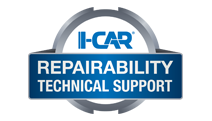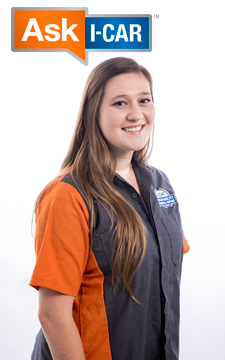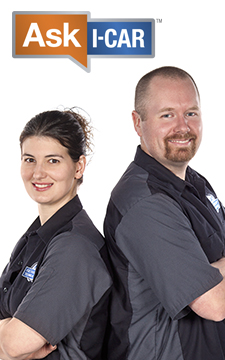Ask I-CAR
Share:
|
Request
What does I-CAR say about how to use weld-through primer?
Response
Joining surfaces can be the source of corrosion hot spots if not adequately treated. After straightening and cleaning the weld mating surfaces, a weld-through primer is often applied for corrosion prevention.
Weld-through primer:
- Is designed to be used for both GMA weld and spot weld mating surfaces. This includes butt joint inserts when the insert is not E-coated.
- Is heat-resistant, so it will not burn away during the welding process as much as other coatings would.
- May be zinc-based. Claims of 95% zinc content means that 95% of the coating left after the primer has cured is zinc. Copper weld-through primers are available, but not recommended for use.
- Is available as a spray or brush-on product.
- Is applied to clean, bare metal surfaces that cannot be protected by primer or anti-corrosion compound. These areas include flanges and inserts or reinforcements that are flush with the part.
- Is not a good base for topcoats. Any excess weld-through primer should be cleaned off before applying other coatings.
- May need to be dry to the touch before welding. Some can be welded when the coating is still tacky.
- Should be applied in one thin coat of brush-on product or two light coats of aerosol. Applying too much increases resistance to the welding process resulting in excess heat and weld splatter.
- Should be removed from the weld zone before GMA welding. Welding through weld-through primer may cause porosity in the weld. This requirement may not be clearly stated on the product container or even in the product data sheet.
Some manufacturers do not recommend the use of weld-through primer.
Check out the I-CAR Collision Repair News article: Weld-Through Primer Guidelines









